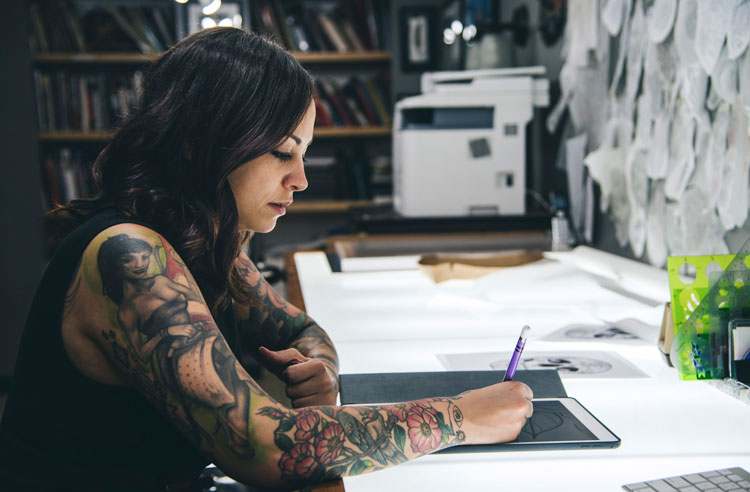Tattooing is a hard job. It takes a lot of dedication and talent, and if you want to be successful in the field, you have to be willing to work hard. But that doesn’t mean learning how to become a tattoo artist is impossible! In fact, there are many different ways for people interested in getting into this career path–from formal training programs like apprenticeships or associate degrees through online courses and universities accredited by professional associations like AATFAA (American Academy of Tattoo & Piercing Arts) or SDA (Society of Dermatology)
If your artist is comfortable with tattoo numb for you, that’s between you and your tattooist. This is all just based on the experiences I’ve had over the years. It’s perfectly understandable to want to find a way around an unknown pain though, the process doesn’t have to be so scary he says “However, the numbing cream may or may not be effective depending on the type of ingredients used.
Get a formal training:
To become an artist, you’ll need to get a degree in art. There are many kinds of degrees that can help you achieve your goal—from fine arts (painting and drawing) to graphic design (sketching and computer-based imaging). You could also consider pursuing a degree in fashion design, photography or web development if it’s something you’d like to pursue further down the line.
If none of these sound right for you then perhaps consider getting some tattoo training at one of the many academies around town before enrolling in college afterwards!
Start with a portfolio:
If you’re going to be a tattoo artist, it’s important to have a portfolio. A portfolio is a collection of your work, and it can be used for many different purposes:
- You might show your work to potential clients or employers so that they know what kind of quality you bring.
- Your mentor or teacher may want to see the best copy of any piece in order to critique it properly (and not just “like” something because they’re afraid their own works won’t measure up).
The first step towards building this kind of collection is getting started with practice!
Don’t try to tattoo right away:
Don’t try to tattoo right away. It’s better to start by practicing on yourself, your friends and family and a dummy. Then you can move onto the machine and finally the gun.
The best way for you to become a tattoo artist is through practice!
Find a mentor or teacher:
Finding a mentor is one of the most important parts of becoming a tattoo artist. They can help you learn about your craft, guide you through the process and provide feedback on your work. It’s also important to find someone who has experience with the kind of tattoo you want to do so they can give advice on how they would approach it.
Find an artist to apprentice under:
If you’re serious about becoming a tattoo artist, it’s important to find someone who will teach you the industry’s fundamentals. This can be done through apprenticeship programs or by working under an established artist.
If your dream is to become a full-time artist and open up your own shop one day, then it might be best if you looked into getting some kind of formal education in order to make sure that this dream comes true. Some artists offer lessons at their studios as well as workshops where they teach other artists how they do things.
You can also look into finding an apprenticeship program through colleges or universities around the country; these are often available through departments dedicated specifically towards this purpose (such as “Tattoo Artistry” at Berkeley University).
There are many ways to learn how to be a tattoo artist:
There are many ways to learn how to be a tattoo artist. You can learn from books, online courses, and other people. You can also learn from a mentor or teacher. Or perhaps you’ve seen someone who is good at what they do and want to follow in their footsteps!
Conclusion:
Hopefully this article has helped you get a better understanding of what it takes to become a tattoo artist. If you are interested in learning more about the career, check out our other articles on getting started, choosing your studio and becoming successful in the industry.
